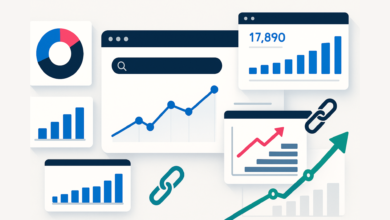Should You Stop Tracking Average Position in GSC?

▼ Summary
– Average position in SEO reporting is becoming misleading due to Google’s AI features like AI Overviews and AI Mode blending with traditional search results.
– Google Search Console combines different result types under average position, skewing the metric with low-impact or high-visibility placements that don’t reflect actual traffic.
– AI Overviews and similar features artificially inflate average position, making it unreliable for assessing true page visibility and click-through performance.
– SEO strategies should shift focus from average position to metrics like click-through rates, organic traffic, and conversions to measure genuine engagement and business impact.
– Analyzing rankings by feature type (e.g., blue links, AI Overviews) and using percentile-based metrics (e.g., P50, P90) provides a clearer, actionable view of SEO performance.
Understanding the limitations of average position metrics in Google Search Console has become essential for modern SEO strategies. As search results evolve with AI-powered features like Overviews and AI Mode, traditional ranking indicators often paint an incomplete picture of true visibility and performance.
The search landscape no longer resembles the simple list of blue links that once dominated results pages. Today’s SERPs blend machine-generated summaries, interactive widgets, video snippets, and localized business listings alongside standard organic results. Each element competes for user attention, fragmenting clicks in ways that make conventional ranking metrics less meaningful.
A critical flaw emerges when Search Console calculates average position. The system assigns the same positional value to an AI Overview appearing at the top of the page as it does to traditional first-position links. This creates misleading scenarios where a page might show an average rank of 2.5, suggesting strong visibility, while most actual traffic originates from a standard link sitting at position four or lower.
These distortions carry real consequences for decision-making. Marketing teams might celebrate apparent ranking improvements while overlooking stagnant click-through rates. Resources could shift toward optimizing for high-visibility AI features that generate minimal traffic, neglecting keywords that drive conversions from less prominent placements.
More insightful alternatives exist for measuring search performance. Segmenting data by result type provides clarity, track blue links separately from AI Overviews, People Also Ask boxes, and other rich features. This reveals which formats actually engage users rather than simply occupying screen space. Click-through rates for each segment prove particularly valuable, showing where visibility translates to visits.
Percentile-based metrics offer another solution. The median position (P50) identifies the middle point of all rankings, while the 90th percentile (P90) shows where most placements cluster. Both resist distortion from extreme highs or lows better than simple averages. A trimmed mean approach, excluding the top and bottom 5% of positions, also yields steadier insights.
Practical implementation starts with data organization. Export Search Console records and tag queries by their appearance format. Many third-party SEO tools now automate this classification. Compare click performance across feature types to identify genuine engagement drivers versus vanity placements. Update reporting dashboards to highlight these segmented metrics alongside traffic and conversion trends.
Optimization efforts should prioritize elements that demonstrably influence user behavior. For standard listings, compelling title tags and meta descriptions remain crucial. Structured data markup helps content stand out when appearing in special blocks. Pages featured in AI Overviews should clearly answer target queries with well-structured information to maintain accurate representation in machine-generated summaries.
Educating stakeholders completes the transition. Present side-by-side comparisons showing how AI features skew average position without corresponding traffic gains. Highlight cases where traditional links at modest rankings outperform flashy AI placements in driving conversions. This builds organizational buy-in for metrics that truly reflect business impact.
The rise of AI in search demands more sophisticated measurement frameworks. While average position served SEO professionals well in simpler times, today’s fragmented SERPs require deeper analysis. By focusing on feature-specific engagement and conversion pathways, marketers can cut through the noise and allocate resources where they deliver measurable returns.
(Source: Search Engine Journal)





